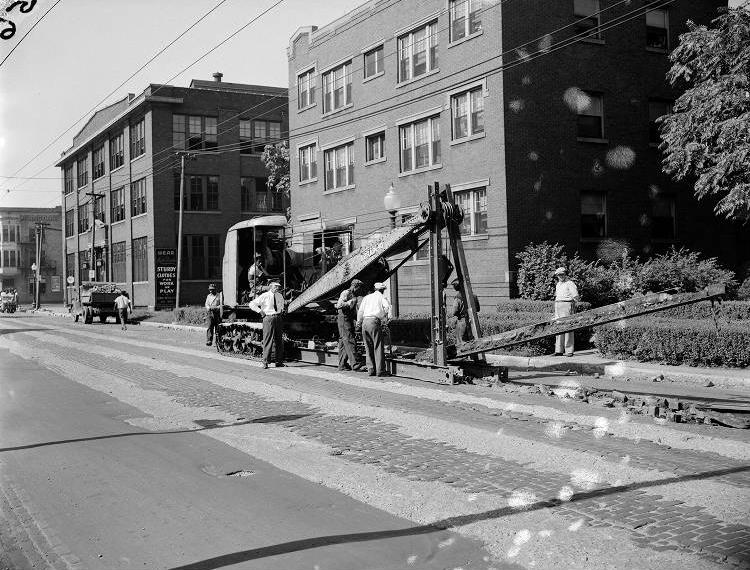Indianapolis streets originally consisted of dirt paths hewn from the forest, in which the stumps were gradually removed.” Corduroy” logs were occasionally laid in wet places, and sometimes (grudgingly) ditches were cut to drain off water and sewage.
In 1836, the city named its first surveyor and engineer to establish proper levels and define the corners of public streets. Except for Washington Street, which the federal government paved with broken stone (macadamizing) as part of the in 1837, city streets received no significant improvements before the 1850s. During the last decade before the Civil War, many streets were graded and graveled, and a few routes were “boulderized” with cobblestones.
Dramatic growth and prosperity following the Civil War produced new demands for improved paving and the means with which to proceed. Cobblestones provided the most durable, time-tested street surface, but they jarred vehicular traffic and generated irritating noise.
Beginning in the 1870s, pavers experimented with different kinds of wooden blocks (often referred to as Nicholson block), yielding a smoother, quieter surface, but one that lacked durability and proved very slippery when wet. Brick paving debuted soon afterward, but results depended largely on the condition of underlying foundations. In the 1890s, College Avenue was beautifully paved with bricks
“Asphalt” sheet paving, using natural asphalt or various bituminous residues mixed with sand and crushed limestone, sometimes topped stone or macadam roadbeds. In 1888, the city experimented with a new coal tar material called “vulcanite” which turned gummy in hot weather. Nothing worked satisfactorily, and, as new water, sewer, and gas utilities repeatedly dug up the city’s streets, conditions continued to deteriorate.

By the end of the 19th century, Indianapolis had become a modern city with distinctly primitive streets. To help promote improvements, a new was founded in 1890. That body’s first significant act was to sponsor a national (April 1-5, 1890) at which suppliers exhibited the latest materials and methods.
Experts continued to recommend granite blocks laid over a foundation of “hydraulic cement concrete” as the ideal (if expensive) pavement for urban thoroughfares. As long as property owners paid required assessments for street paving and maintenance, however, the search for cheap, durable substitutes continued.
In the 20th century, vendors of wood blocks, bricks, cobblestones, macadam, and asphalt pavement continued their rivalry until concrete emerged as the street paving material of choice. Long recommended for foundations, scientifically formulated concrete displaced other methods beginning in the 1920s, influenced particularly by research disseminated at Purdue University’s Annual Road School.
The majority of Indianapolis streets have been widened and rebuilt several times in the late 20th and early 21st centuries, but examples of older technologies occasionally can be found in alleys, back streets, and underlying modern pavement at excavation sites.

Help improve this entry
Contribute information, offer corrections, suggest images.
You can also recommend new entries related to this topic.

